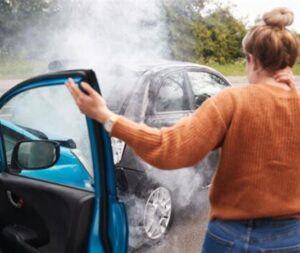#NBAW2020
As part of the week-long campaign, the American Burn Association designates a “theme” for #NBAW; this year’s being: Contact Burns – Hot Surfaces Damage Skin!
Contact burns, as they sound, are burns resulting from contact with hot objects or hot liquids, rather than flames or fire. Among the most common forms of burn injuries, contact burns send more than 70,000 people in the U.S. to the ER annually, with about 1/3 of those being children.
Your Triumph Is Our Triumph
(916) 500-0000Preventing Contact Burns:
Prevention, as they say, is worth a pound of cure – and that’s undoubtedly true when it comes to burn injuries. With safe practices in the home, sensible policies at work, and a consistent commitment to safety, there are many ways we can prevent contact burns.
Here are a few contact burn facts worth knowing, and some helpful prevention tips.
- Children are most at risk: As adults, we’ve learned what items in and around the home (the number 1 location for burn injuries) pose risks of burns, and have learned how to use those items safely. Children, on the other hand, don’t always know when objects or liquids pose burn risks, and are often drawn to hot objects simply because of their curiosity. With contact burns being a major risk for kids, it’s important to keep appliances like stoves and ovens, and items such as curling or clothes irons, space heaters, and other consumer products out of reach. Never leave hot items plugged in, never cook while holding children, and always supervise children when they’re in risky areas. You can also consider creating “no-kid” zones in some of the home’s most dangerous locations, such as the kitchen, fireplace, and heater / water heater service area.
- Safe cooking practices: Kitchens can be a safe haven for some, but they’re filled with significant burn hazards. From stoves, oven ranges, and microwaves to the heat-conducting utensils or dinnerware we use, potentially hot items in the kitchen cause a majority of contact burns. Managing these risks means practicing safe cooking habits: use mitts and potholders when grabbing hot dishes, use only the back burners when possible, and turn off all appliances when not in use. Again, you can consider keeping a no-kid zone in the kitchen when appliances are on, or carefully watch children when teaching them the correct way to navigate these hazards.
- Workplace burn risks: You don’t have to be a thermal nuclear chemist or an auto mechanic to face burn injury risks at work – at least 10% of all contact burns occur in varied workplaces across nearly every industry, according to the ABA. Whether your welding, working with hot engines or machinery, or making a cup of coffee in the corporate conference room, safe practices are just as important. Take steps to find out what your workplace policies regarding hot items may be, wear protective gear or any PPE required by OSHA, and alert supervisors and coworkers to burn hazards as soon as you learn of them.
- Bare feet can burn too: Cooking an egg on the sidewalk is something many Californians can say they’ve done, and while interesting and somewhat scientific, the experiment is perhaps best at reminding us that hot pavement and heat-conducting surfaces can reach temperatures that burn bare feet. Even on days where temps are just 77˚F, asphalt can reach temps as high as 125˚F! Keep that in mind should you want to shoot hoops barefoot in the summer sun, visit the beach, or kick back with your feet on a fire ring – and wear proper protective footwear.
- Fireplace fences: Fireplaces can be very dangerous hazards, which is why fences or fireplace-grade gates can help reduce risks – both for errant embers that may fly into the house, and for curious kids and pets who may get too close. If your fireplace has glass doors or glass covers, know they are not immune from getting hot – glass doors can reach temperatures in excess of 1200˚F, and take over 45 minutes to cool to the touch.
- Consumer products: Some of the most unassuming risks for burn injuries come from consumer products – whether it’s a clothes iron, heating blanket, space heater, or curling iron and other beauty products. Treat these products with the care they require, following manufacturer instructions and warnings, and making sure to always turn them off and safely store them out of reach so children can use them or somehow turn them on. If you experience an unusual hazard, look into reporting it to agencies like the Consumer Product Safety Commission.
As we observe #NBAW2020, we encourage everyone to visit the American Burn Association website to learn more about this year’s theme, prevention tips for various burns, and what’s being done to improve the way we treat burns and burn victims domestically and abroad.
Contact Us for A Free
& Confidential Consultation
(916) 500-0000
Triumph Law, P.C.: Fighting for Burn Injury Victims
Unfortunately, it is a fact that even the most safety-conscious person can suffer preventable harm – especially when others are negligent. Be it the manufacturer of a defective product, a negligent premises owner, or the failures of those with legal obligations to keep children safe, preventable burn injuries do happen.
If a burn injury has happened to you or someone you love, and you believe it could have been prevented, our Sacramento attorneys are available to speak with you personally about your potential case, rights, and options. Triumph Law, P.C. offers free consultations, and serves clients across Sacramento County and the surrounding areas. Call (916) 500-0000 or contact us online.




